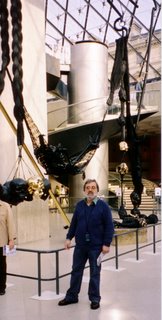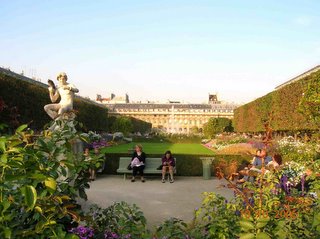We had a late start this morning, enjoying the luxury of breakfast when we felt like it rather than to a hotel timetable. There was only a light drizzle and it wasn’t cold so we headed back to St Mary’s to take some photos and to search for the famous stocks.
 We eventually found them just outside the churchyard but they were much smaller than I expected, and not so public. Anyone wanting to chuck eggs or tomatoes at the miscreant would have had to go out of their way to do it because they’re tucked away from the High Street and hidden discreetly by a wall. I like to think that perhaps the nearby church inspired compassion rather than spite in any passers-by – because it must have been miserable sitting on that cold stone seat for any length of time, never mind the humiliation.
We eventually found them just outside the churchyard but they were much smaller than I expected, and not so public. Anyone wanting to chuck eggs or tomatoes at the miscreant would have had to go out of their way to do it because they’re tucked away from the High Street and hidden discreetly by a wall. I like to think that perhaps the nearby church inspired compassion rather than spite in any passers-by – because it must have been miserable sitting on that cold stone seat for any length of time, never mind the humiliation.
 We needed all the power of Tim’s fancy camera to get a shot of the cannonball marks on the church spire – they’re way up high! Apparently during the Civil War, Charles I stayed in the town and the spire was used as a range finder by Cromwell’s troops in 1642. Jill, our host here at Byfield House, has a hidey hole in the roof that was used for concealment during this period, and the church spire still bears the scars of the battle that took place here. It’s a rather unlucky spire because it also got struck by lightning in 1883, and forty feet of it fell down on top of the nave and some of the Georgian table tombs for which the cemetery is famous. I’ve discovered these details courtesy of another interesting book that’s here for guests to read. It’s called Timpson’s Country Churches by John Timpson, and it’s full of all sorts of curiosities about village churches – I wish I had more time to seek some of them out!
We needed all the power of Tim’s fancy camera to get a shot of the cannonball marks on the church spire – they’re way up high! Apparently during the Civil War, Charles I stayed in the town and the spire was used as a range finder by Cromwell’s troops in 1642. Jill, our host here at Byfield House, has a hidey hole in the roof that was used for concealment during this period, and the church spire still bears the scars of the battle that took place here. It’s a rather unlucky spire because it also got struck by lightning in 1883, and forty feet of it fell down on top of the nave and some of the Georgian table tombs for which the cemetery is famous. I’ve discovered these details courtesy of another interesting book that’s here for guests to read. It’s called Timpson’s Country Churches by John Timpson, and it’s full of all sorts of curiosities about village churches – I wish I had more time to seek some of them out!
 Eventually we got ourselves organised and set off for Cheltenham. It was bigger than we were expecting so it took us a while to find the art gallery and museum but it was well worth it.. Apart from he frisson of visiting the town from which our own home town gets its name, it’s a lovely place full of gorgeous Georgian and Regency houses. The museum had cabinets with bits and pieces from its Anglo-Saxon origins but what we liked was the paintings, pottery, decorative plates and photos from the 17th century onwards. Amongst other interesting bits and pieces there was a metal sculpture of a chimney sweep that was used to advertise the business which reminded me of The Water Babies – what a dreadful job it must have been for children in the days when such things were allowed! We really wanted to buy a souvenir book showing some of these things but none was to be had, and nor could we buy the polo shirts emblazoned with Cheltenham Art Gallery and Museum that staff were wearing, All they had for sale was local craftworks – pottery and the inevitable handmade jewellery – so all we have is a couple of postcards.
Eventually we got ourselves organised and set off for Cheltenham. It was bigger than we were expecting so it took us a while to find the art gallery and museum but it was well worth it.. Apart from he frisson of visiting the town from which our own home town gets its name, it’s a lovely place full of gorgeous Georgian and Regency houses. The museum had cabinets with bits and pieces from its Anglo-Saxon origins but what we liked was the paintings, pottery, decorative plates and photos from the 17th century onwards. Amongst other interesting bits and pieces there was a metal sculpture of a chimney sweep that was used to advertise the business which reminded me of The Water Babies – what a dreadful job it must have been for children in the days when such things were allowed! We really wanted to buy a souvenir book showing some of these things but none was to be had, and nor could we buy the polo shirts emblazoned with Cheltenham Art Gallery and Museum that staff were wearing, All they had for sale was local craftworks – pottery and the inevitable handmade jewellery – so all we have is a couple of postcards.
 Our next stop was the birthplace of Gustav Holst, composer of The Planets. He only lived in Cheltenham until he was eight but they have his piano there, the one he composed The Planets on, and there’s also an ornate music stand that would look very nice chez Tim and Lisa! There was a large portrait of the man himself, looking bespectacled and thoughtful – and upstairs there’s a fine collection of his father’s Regency paintings as well. The curators have wisely made this little museum interesting to a wide range of visitors by setting up the basement floor as it was in Victorian times with an authentic kitchen, scullery, wash-room and servants’ quarters, so there is something for everybody there.
Our next stop was the birthplace of Gustav Holst, composer of The Planets. He only lived in Cheltenham until he was eight but they have his piano there, the one he composed The Planets on, and there’s also an ornate music stand that would look very nice chez Tim and Lisa! There was a large portrait of the man himself, looking bespectacled and thoughtful – and upstairs there’s a fine collection of his father’s Regency paintings as well. The curators have wisely made this little museum interesting to a wide range of visitors by setting up the basement floor as it was in Victorian times with an authentic kitchen, scullery, wash-room and servants’ quarters, so there is something for everybody there.
On the way back to Painswick we took a side trip to Birdlip which is another one of those small country villages you see on Midsummer Murders. I’m starting to be able to differentiate between houses built at different times, even though I don’t have the architectural vocabulary to describe them. We strolled around admiring their lovely cottage gardens and Tim took heaps of pictures – which alas will have to stay locked up inside his camera until we get back home because my laptop can’t read his camera card no matter how I fiddle around with it.
Another side trip, to Sheepscombe was not a success. The roads were very narrow indeed and we kept having to back up into gates and hedges to let other cars past. At one place the road was so narrow not even a motor bike could get past until we backed up, and we came perilously close to getting bogged in some thick mud. We gave up after a while and headed back onto the A40, and had a local cider to restore ourselves when we finally made it back safe and sound.
Dinner at the pub tonight!















